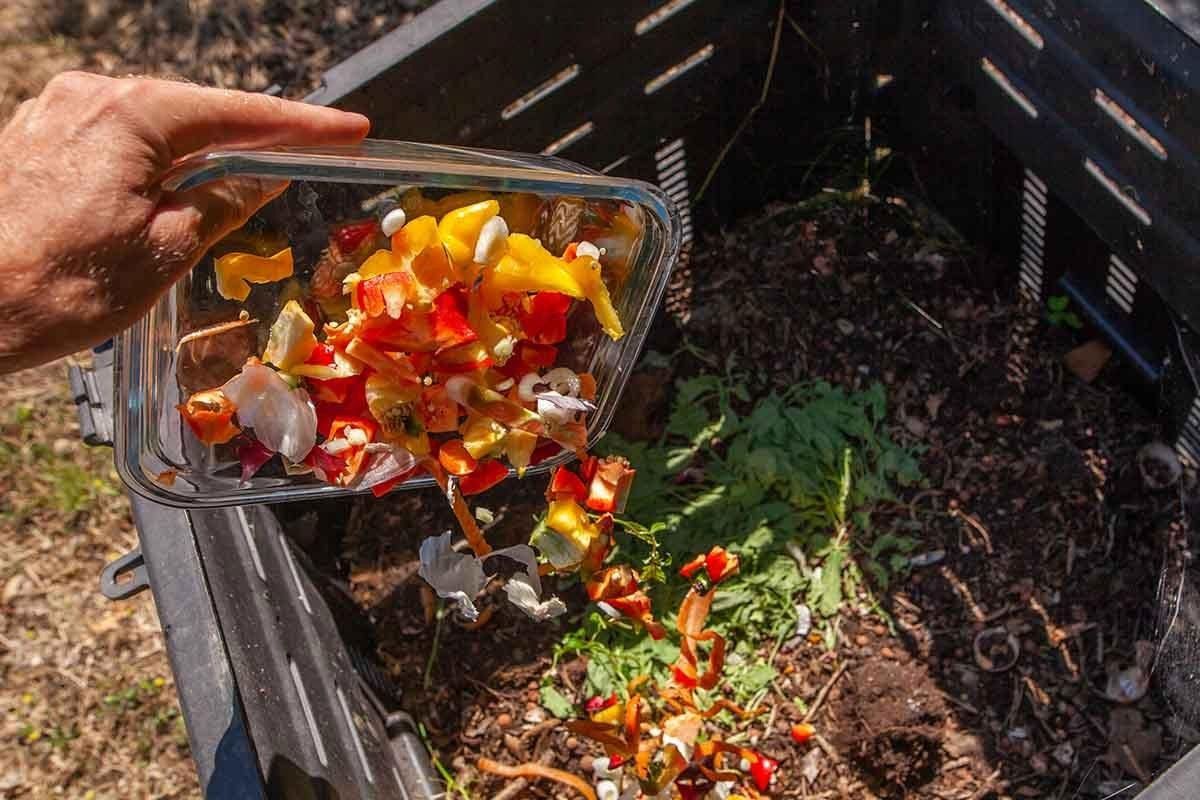Enjoying Outside, Inside: Home Composting

There are countless environmental benefits of composting- improving soil health, saving water, cutting the amount of trash and methane emissions from landfills, reducing the impact of wasted food, and SO much more. For those of us who have organic waste pickup services, composting is as easy as filling up the organic waste bin and putting it on the curb to be swept away each week. What we miss out on by having this great service is the chance to see the microorganisms and other helpful creatures work their magic and turn our food and garden scraps into healthy, nutrient-rich soil. Opting to create an at home compost in addition to or in place of a compost service is a great way to reduce waste, enrich and reduce chemicals in your soil, and get hands- on experience with the decomposition cycle. It’s also startlingly easy- keeping a compost is a lot like taking care of a plant- just make sure it has nitrogen, carbon, water and air, and you’ll get a great product! Don’t worry if you don’t have a green thumb- your compost can even be ignored for a few weeks and continue to work it’s magic. Here’s how to get started on your home compost:
1. Select your method. Starting a home compost doesn’t have to be complicated. If you have some outdoor space, an old trash bin or wooden crate will work great as a container. Or, opt for no container and just create a compost pile! If you don’t have a backyard, there
are various options for small indoor friendly home composts. Vermicomposting using earthworms can be done in a small container like a 5 gallon box and stored under the kitchen sink. The Japanese method of fermenting food scraps called Bokashi is another small space idea, and unlike other methods can break down ALL of your food scraps, including meat, fish, and dairy- raw or cooked. This method is unique as it includes the addition of an inoculant made of wheat germ, wheat bran, or sawdust combined with molasses and effective
microorganisms. More resources about vermicomposting and Bokashi can be found here.
- Ingredients. The two key ingredients in any compost are the “greens” and the “browns”. Greens are the nitrogen rich elements like fruit and vegetable scraps, coffee grounds, or garden clippings. Browns are the carbon rich components like egg cartons, newspapers, and dried leaves. In general, browns are the dry stuff you put at the bottom to help increase air flow, and greens are the wet stuff that goes on top. Continue to layer brown and green, maybe topping it off with brown to reduce odors. Aim for more brown than green to optimize the microorganism activity.
- Wait and Aerate. How long decomposition takes depends on a few factors such as temperature and size. Two months is fairly quick and six months is on the longer end (unless you’re opting for Bokashi, which can break down your food scraps in a few weeks). How much you aerate the compost also affects how well it breaks down. Turn your compost with a sick, spade, or whatever tool you have on hand about once a week.
- Pay attention to your compost. If it starts to smell, that probably means it’s not decomposing. If the compost is too wet, add more browns. If it’s too dry, add more greens. And when it starts to have the sweet, earthy aroma of healthy soil, it’s probably finished decomposing and ready to use!
If starting a home compost isn’t in the cards for you but you’d still like some of the end product for your garden, many cities have programs that give away free or low cost compost to residents. For example, Yolo County landfill offers free compost in April and May and Elk Grove has a free compost program for city residents.
-Eliana Thompson; ethompson@tuleyome.org
Tuleyome Social Media and Advocacy Associate
RECENT ARTICLES






